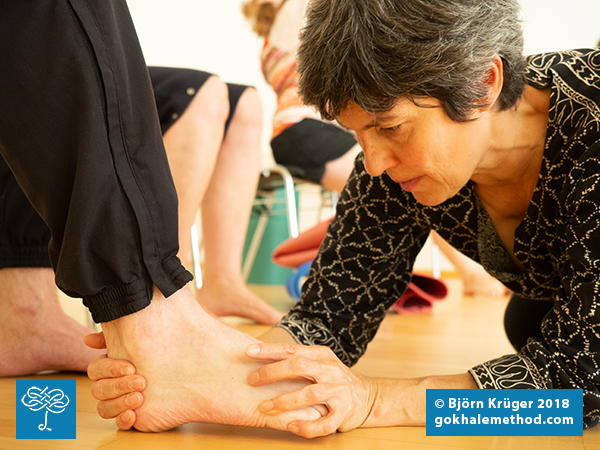
Learning and internalizing techniques doesn’t always happen immediately — or without assistance from a teacher.
I spent many years developing and perfecting the Gokhale Method Foundations Course. After years of crafting the language, honing the metaphors, and rearranging the order in which techniques are taught, I considered the course well-constructed and comprehensive. I was proud to empower students to be independent in taking their posture journey forward. I was proud to not be peddling products gratuitously, nor to insist students keep coming back for additional lessons.
The results of this approach were not always stellar. Though some students functioned just fine after one go-round of a full 6-lesson Foundations Course, most students, not surprisingly, needed ongoing repetition to “get it” in their minds, their bodies, and their memory.
The example that brought this point home vividly involved a student who is a physician. She had undergone one back surgery and was scheduled for another. She had extreme sciatic pain that made her want to lie down as much as possible. Driving herself anywhere was impossible, so she hired someone to drive her to her private clinic, where she worked the few 2-3 hours her pain levels would allow, and then was driven home again.
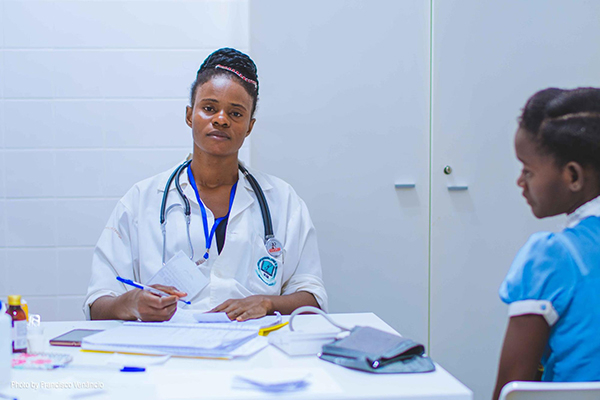
Physicians are among the many groups whose work environments can predispose them to posture issues, especially when they tuck their pelvises or stoop over patients or computers. This doctor in Angola, likely because of healthy cultural modeling, demonstrates the lovely upright bearing that’s possible (and desirable) in this context. Image courtesy Francisco Venâncio on Unsplash.
After working on the basic techniques in a few private lessons, she was able to reduce her pain level to 0 and cancel her scheduled surgery. She followed up with some recommended maintenance lessons and then let the lessons come to a halt.
A year later she made an appointment during which I was shocked to find her in approximately the same condition she first came in with. I probed gently to discover what had happened. It emerged that one of her patients, a fitness instructor, had invited her to a weekly fitness class. Over time, she had conformed to tucking her pelvis as instructed. In the process of relating the story to me, a realization dawned on her: “Oh yeah, that’s what caused my troubles last time…” Wow. In listening to her a parallel realization dawned on me. Here was a highly-trained medical professional who had gone from being in a dire situation to being completely pain-free, and still the teaching had not held.

Fitness instruction advocating a tucked pelvis ended up making things worse for my physician student who suffered from sciatica. Image courtesy Anupam Mahapatra on Unsplash.
That was when I realized we needed a maintenance program. It’s obvious in hindsight, of course. Adults especially can feel that new information doesn’t “stick” because it gets harder to learn as you get older. I suspect that we actually overlook just how much repetition we did to learn most things when we were younger! That’s why we took over a thousand lessons in school in Math and English! If you have learned to play golf or do certain dances, how many times have you practised that swing, or rehearsed those steps? Learning takes exposure and repetition. It works.
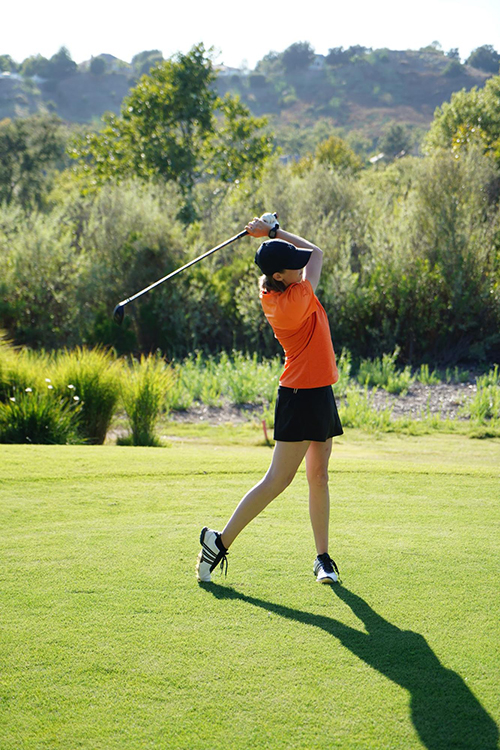
Like perfecting a golf swing or learning a new dance step, posture techniques need regular practice in order to “stick.” Image courtesy Andrew Lomas on Unsplash.
We see some students returning to our classes after gaps of many years, and, like the physician, in that time they have often been culturally “reprogrammed” to tuck the pelvis, to slump, or to sway. We also see clearly that the forgetting curve is very real, and how easy it is to backslide into old habits. When we teach these alumni alongside more recent graduates whom we advised better about the need for revision and follow-up classes, the difference is very obvious. Humans simply learn better with repetition, and the Gokhale Method is no exception to this rule.
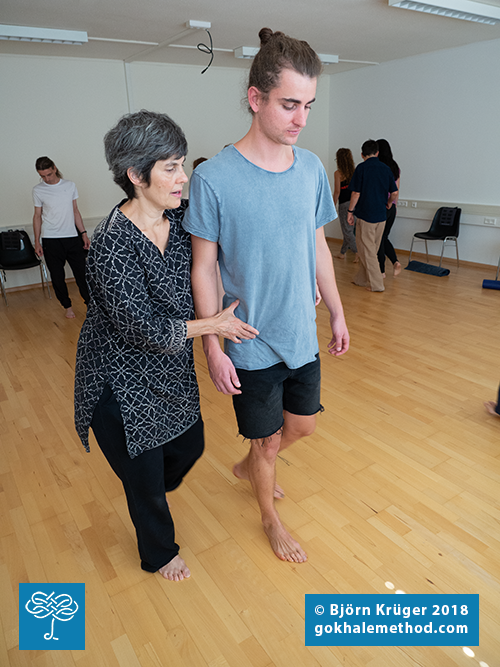
A great benefit of the Gokhale Method is the sheer variety of mediums available to reinforce and diversify the learning process.
To meet this need, consider refreshing the material or switching up the format. For example, all of our qualified teachers offer private lessons to alumni. It's surprising how much can be learned in a single lesson once the basics have been covered. If you've taken a Pop-up Course, consider taking a 6-lesson Gokhale Method Foundations Course — or vice versa; if you've taken a group course, consider taking a private lesson. Retreat programs at locations like Esalen Institute, Omega Institute, Kripalu, and 1440 Multiversity are helpful for newcomers and alumni alike and offer the opportunity to learn in a restorative, memorable setting. And some of our teachers offer small-group continuing education classes. All of these are rewarding pathways for relearning and refining the basic techniques, and coming away with different takeaways.
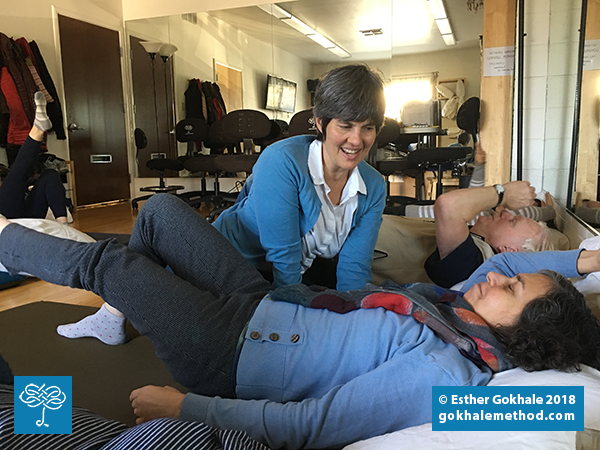
Working with students and actively helping them learn is a great joy for me and our many other Gokhale Method teachers.
Regardless of which specific new tack you choose, we recommend taking your first refresher class within 1-2 months of graduating from the Gokhale Method Foundations Course or the Pop-up Course. The next refresher happens best within 3 months of the first one. From then on we recommend doing an in-person session — private or group — at least every six months, and sooner if there are still significant challenges. Working in-person with a teacher is always best, but if that’s not possible, a session can be scheduled online, which is surprisingly helpful for troubleshooting and keeping your own known posture challenges on your radar. So if you are one of our Foundations Course or Pop-up Course alumni, schedule that session! Our experienced teachers are ready to help.

Hands-on learning with a Gokhale Method teacher helps students refine and refresh the techniques, whether they’re just beginning their posture journey or whether it’s been years since their first lesson.
We have also created an Online University which includes 2 Live Chats with me every month and unlimited access to our on-demand library of over 60 instructional videos. Each lesson focuses on a specific posture topic, such as Beyond Stacksitting, Cooking with Healthy Posture, Foot Health, Yoga with Healthy Posture, dance, exercise routines, and so on. You are then able to revise and extend your posture expertise at any time for an entire year. Now wouldn’t that be a great idea for 2020?
If you are one of our Foundations Course or Pop-up Course alumni, you can sample a free session of Online University content here. And from now through December 20, 2019, all of our alumni can save $100 on a year-long Online University membership! You must call our support team at 1-888-557-6788 to receive this special rate.
We wish you a peaceful holiday season filled with good posture!


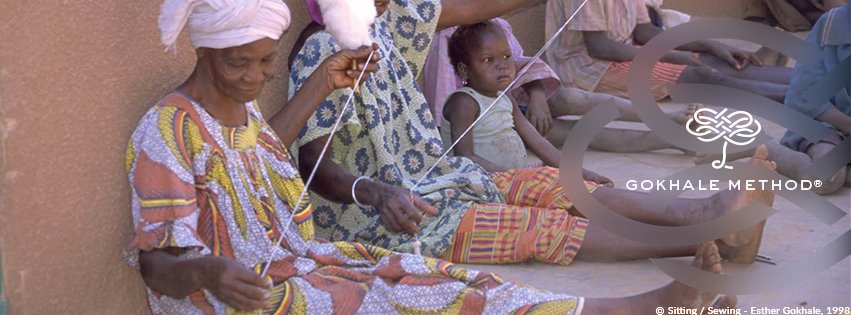
Comments
Dear Esther,Abeja Hummel gave
Dear Esther,
Abeja Hummel gave me your book many years ago now, at the Buckeye Gathering, where I've been teaching carving for more than a decade -- and where I met you the year you came! That was a treat. I also count myself fortunate to be friends w/Kathleen Marie and her husband Lou (Kathleen constructed two indexes for me before she started working with you, and when I discovered that she had trained w/you, I helped organize and hosted a foundations class for her at our dojo — I think she gave me and my wife a break on the fee, too).
Between the book and my aikido practice, I have apparently (touch wood) left behind my chronic (and typically at least annual) back "incidents." The last one was in 2013. And the method has been tremendously helpful in managing and reducing hand pain and shoulder issues that have dogged me as I’ve been trying to develop my craft practice and skills (natural building, and also turning bowls on a foot-powered lathe and hand-carving bowls and utensils). I also feel that my body and environmental awareness has increased tremendously as a result of my desire to carry a better physical attitude into the world. It has also helped my wife, and we try to share it w/our sons (13 and 16 — hmmm, a whole ‘nother challenge).
I recommend your book to everyone, and refer to it whenever I teach -- because posture affects everything!
A few years I got into a conversation w/a friend — a very talented and accomplished young woman — who told me that she got a bad rap in school largely because she held herself upright, and didn’t copy the prevailing teen slump. To me, this is more than a metaphor for our situation. “Normal” demands submission, it demands we give up our birthright, our pride, our power, our ability to act in the world. In school, perhaps it’s seen as an attitude of rejection, but my friend’s story suggested a deeper truth. Everywhere I go I see people w/their tails between their legs.
The question you’re asking in this post seems to me like the big one: how to encourage and incorporate practice, so that everyone can regain the posture and health that belongs to them?
I love the primitive skills gatherings because they bring people together in a way that encourages a whole set of valuable, traditional cultural practices that we reinforce w/each other for a week, and then take home to try and incorporate into our lives. And the people aren’t all from the same socio-economic background. There’s room for a mix. Many participate on a barter basis, and there are scholarships to reduce the obstacle effect of money. I also love 12 step groups, which offer another kind of re-training for cultural health and development — and it too is not bound and defined by the ability to pay — all kinds of folks show up, and we all learn from each other. Then there’s Aikido. Unlike your student’s experience in their exercise class, Aikido reinforces just about every bit of your program. And (like yoga) as a spiritual practice, we seek to develop ourselves, and maintain the practice. At the dojo where I train, we participate as members and pay fees to cover rent and maintenance, but noone is making money.
In my craft practice, I also teach spoon carving (which has become quite “a thing,” driven, in part at least, by the internet.) There’s a huge amount of video and web-based content for anyone who wants to learn — but classes provide so much that video can’t. So people are forming “spoon clubs,” where folks get together to carve, share wood, develop skills and friendships. Things happen. One of the resources I recommend to my students who don’t have a lot of time or money for classes is the video library at spoonclub.co.uk — there, for a small fee, they have access to a huge video library that covers all the basics and then some. In a month, a person could undertake an intensive course of self-study — or they can have a class a month for a year for the same amount as they’d pay for a two day class with an instructor. And partly as a result, I think, more and more spoon clubs are forming.
Of course, the teachers at the skills gatherings bring wares to sell, charge for materials, and sell their services elsewhere. And people in 12 step groups make use of therapists and other professionals. And there are dojos that pay their teachers. And the carving world employs a lot of teachers who make their livings that way.
But most of the folks I talk to about posture principles aren’t in a position to pay for a class, much less refreshers (me neither). I try to set an example, but I wish there was something else, in addition to the book (and Aikido), that I could refer them to; something they could afford, that would also invite them to participate in developing their posture and awareness.
Thank you so much for the gifts. May they be fruitful and multiply.
Dear Esther, I have followed
Dear Esther,
I have followed your method from the book since December 2010, after which I did a Foundations Course in the fall of 2014. I am very enthusiastic about what you teach, and it has helped me greatly in my daily life. I do however wonder if there is not an element that makes students fail built right into the course. All Foundation Courses that have seen offered in my area, have been taught on three consecutive days, including the course I did. I had been working on my posture and studying the book for 4 years before I ever saw a teacher, so I knew what we were learning at least in theory, and the material was not overwhelming for me. For the other participants it was all new, and I got the distinct impression that it was in the end too much, too quickly. I understand that with a visiting teacher there is not much room to do things differently, but where there is a resident teacher available, wouldn't it be better to split the course into 3, or ideally 6 parts, with at least one week in between? Then the students have the time to work on a few habits at a time, the way you actually recommend in the book. I think that would drastically improve the results for many students.
There are pro's and con's in
There are pro's and con's in every format. Your argument works against any intensive offering, e.g. a language immersion. Immersions work very well for many people and it's the only way some people can do it. Local teachers tend to offer a variety of formats; the intensive ones are by far the most popular. And intensive courses do have some advantages - for a short period it's possible to focus more deeply on these new techniques.
I agree that the course covers a lot of material, but by the end it comes together for almost everyone - that's what students tell us on their feedback forms. And no matter what the format of the initial course, revisiting the techniques is such a good idea. And it doesn't need to be a huge expense of time, money, or effort. My rule of thumb is that graduates need to spend 1 hour per month focused on thei posture to not lose what they learned. That's not asking a lot.
All students are encouraged to study the book ahead of, during, and after the course. It becomes an especially useful resource alongside getting hands on help. Without it, we would probably have needed a different structure...
I agree that the foundation
I agree that the foundation course is really not effective in 2 consecutive, intensive days. Long days with little interval for practice between classes left me feeling the class was ineffective. I then felt forced to spend even more money for the video, to ensure I didn't continue incorrectly, and that was frustrating.Walking around in circles inside is not analogous to walking at home in the course of the day. Had we had time to practice at home,in between lessons, we could have been reevaluated to see if the lessons had "stuck." The before & after pictures were informative, but not really dispositive because we were prompted for the "afters" and they were not automatic postures. In fact, I think we could have been coached to do exactly the same poses for "befores" sans class.
I did not anticipate that after taking the course, I would not have confidence that I was performing the various postures & the walking properly. I expected that I would get enough practice & coaching to be certain what I was doing was correct. The movement information in the course is very different from that which most of us have internalized during our lives, and our bodies & minds are not accustomed to the novel & unusual ways of moving, sitting, lying, bending.... It's as if one tried to teach someone to play tennis or do ballet in 2 long days with no follow up.
I really do believe that the method is vital and revolutionary, which is why I signed my partner and myself up, but I must be honest and tell you that the compressed course did not do the method justice and $450 (for us $900) was a great deal of money to spend only to end up not knowing if we were getting it right.
I agree with Dinie and Cara.
I agree with Dinie and Cara. The compressed classes do not provide enough time for practice and absorbing the changes that need to be made. My husband and I took a class on two consecutive Saturdays, which was the only one I could find that was not a single weekend. I think six weeks would be ideal, and even Esther recommends a followup at 1-2 months, which would fit in with this format.
Also, I felt that there was too much emphasis on the walking, which is the last thing in the book. Some people in our class became so focussed on the walking that they did not really pay attention to the other lessons. I have found that on the rare days when I am acutally pretty well aligned, the walking just comes naturally. I would have preferred more time spent on the bending and standing, which I did not feel were covered very well. These were the things that I had trouble learning just from the book.
The longer format would also allow time in between to address those muscle issues which are keeping us in the bad posture in the first place (improperly short or long muscles in the shoulder and back, for instance). I have found that no amount of streching will overcome latent trigger points in the muscles, and these may need to be addressed by professional massage (for self-help, I highly recommend "The Trigger Point Therapy Workbook: Third Edition" by Clair Davies).
I do believe in the method and I continue to review the book, but I am reluctant to spend additional money for classes when the first ones were not up to expectations.
You rock Esther!
You rock Esther!
En medio de la era de los
En medio de la era de los avances tecnológicos, la verificación de resultados en Euromillones ha experimentado una metamorfosis, adoptando la innovación para hacer el proceso más eficiente y fácil de usar. Un método que destaca en esta revolución es la implementación de códigos QR, cambiando radicalmente la forma en que los participantes confirman los números de sus boletos https://comprobar-euromillones.es/comprobar-euromillones-qr.html y exploran su destino en el emocionante universo de Euromillones. Este enfoque innovador no solo simplifica la verificación, sino que también agrega una capa de modernidad y comodidad para aquellos que buscan descubrir si la fortuna está de su lado.
MCPA-Level-1 questions
MCPA-Level-1 questions answers serve as a testament to one's proficiency and dedication within a specific domain. As the digital ecosystem evolves, employers seek individuals with validated skills to drive innovation and efficiency. Becoming a MuleSoft Certified Platform Architect not only validates your expertise but also opens doors to lucrative career prospects and leadership roles.